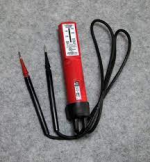230614-2349 EDT
Dsg319:
Depends upon what you want to call an open circuit. For example if you have 120 V applied across a 1000 megohm resistance you will have a very small conductive current, but in most applications this would be considered an open circuit. However it may e possible to measure this current.
Jpflex:
If I take a 10 ft length of thinwall steel conduit, to have magnetic material, and run a single wire thru this conduit with 120 V 60 Hz applied to this wire, and place a remote 10 A load thru this wire, then ---
(1) Connect the conduit to earth and put a thin sheet of Mylar around a potion of the conduit, and over this some copper foil. From the copper foil to earth I connect a high impedance meter, then the meter will read zero volts. The conduit acts as an electrostatic shield. There is capacitance from the 120 V wire to the conduit, and current flows thru this. But the conductive conduit acts as an electrostatic shield, and no current flows from the internal wire to the external foil around the conduit.
(2) Same setup as (1) except I now use a 2000 turn coil connected to the voltmeter. With the coil outside of the conduit I see an induced voltage. The conduit, even though a magnetic material, is insufficient to shield the wire's magnetic field from getting outside the conduit.
(3) Put an isolated test wire inside the conduit, and you will get both magnetic and capacitive coupled signals to the sense wire.
. .
.

